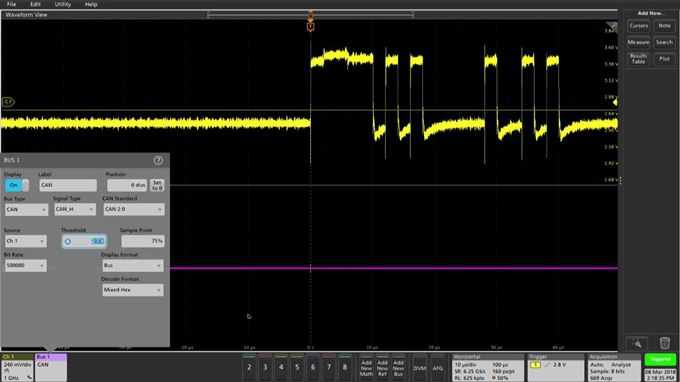Oszilloskope
Anwendungshinweise
Kurzdossiers zur Lösung
Videos

CAN-Bus-Decodierung und -Triggerung mit dem MSO der Serie 5
3/27/2018
Download
Laden Sie Handbücher, Datenblätter, Software und vieles mehr herunter:
Kontaktaufnahme
Live-Chat mit Tektronix-Vertretern. Verfügbar von 9 bis 17 Uhr CET Geschäftstage.
Kontaktieren Sie uns telefonisch unter
Verfügbar von 9 bis 17 Uhr CET Geschäftstage.
